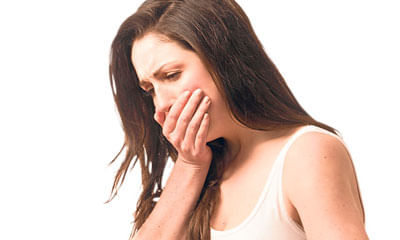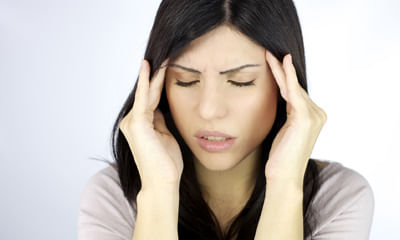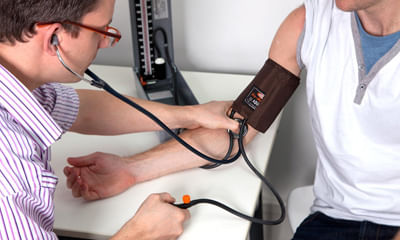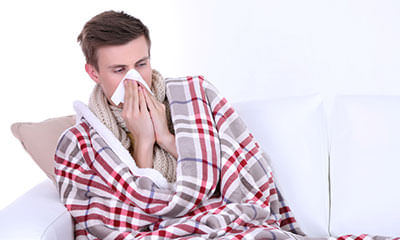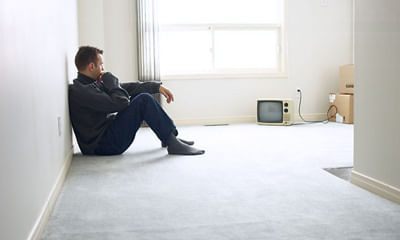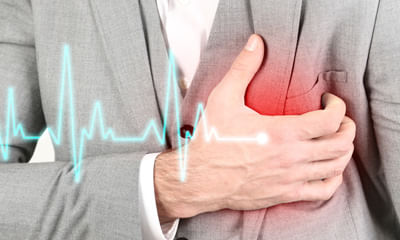Home Remedies For Heaviness In Head
Severe pain in pubis, low back pain, feeling tired, vomiting during period. Please suggest a solution or home remedy. ...
Ask Free Question
Upper back pain pushups this one may seem basic, but there’s no denying that pushups are one of the best ways to strengthen the pectoral muscles. These can be done on the knees or toes. If you’re not ready for full pushups, start with your hands resting on a solid surface higher than your feet — like a very sturdy coffee table or the edge of a couch, cushions removed, that’s pressed up against a wall — and start on the toes. Having your hands higher than your feet and your body at an angle can be a good way to start a pushup regimen. As you get stronger, you can begin to lower the angle of your body. This will help you transition to full pushups more easily than going from knees to toes. A full plank engages the muscles differently, even at an angle. When doing pushups, aim for 2 sets of 10 reps per day. 1.start in plank position with your hands under your shoulders and your core engaged. 2.as you lower, inhale. 3.as you engage your muscles to push yourself up, exhale. Keep your elbows hugging in close to your body. Keep your focus on slowly breathing as you do these, and on engaging the pectorals while keeping the core tight. Don’t just crank these out to get them done — this can compromise your form and do more harm than good. If the movement is really tough, break the sets into three or five to start, or find a higher point to begin after a week of exercise. If necessary, you can even stand and do pushups pushing against a wall. Chest flyfor this exercise, you’ll need a bench or exercise ball as well as some dumbbells. If you don’t have weights, you can always use the old standby: a soup can in each hand. Just keep in mind that dumbbells are easier to hold and you can get more out of using them, as even 5-pound weights are heavier than your heaviest canned goods. 1.lie with your upper and middle back on a bench or ball, with your legs at a 90-degree angle. Hold a weight in each hand and extend your arms to the sky, elbows slightly bent. 2.as you inhale, lower your arms out wide, until your elbows are at shoulder height. 3.as you exhale, raise your hands until they meet above your chest again. 4.do 2 sets of 10. If that feels pretty easy, up it to 2 sets of 15 or increase the weight you’re using. Dumbbell row strengthening your back muscles is an important component of treating pectusexcavatum. The dumbbell row targets your lat muscles. The way it’s described below also strengthens your core, another important component of treating the condition. You’ll need some dumbbells to complete this move — err on the lighter side if you’ve never done a row before. 1.hold one dumbbell in each hand with your arms extended. Hinge at the hips until your upper body reaches a 45-degree angle. 2.keeping your neck in line with your spine and your gaze straight down, pull your elbows straight back and squeeze between your shoulder blades. 3.extend your arms back to the starting position. Complete 2 sets of 10. Dumbbell rear delt fly another move to strengthen your back, a dumbbell rear delt fly also focuses on the lats, as well as the rhomboids and the traps. Choose a light pair of dumbbells to complete this move and ensure that you’re pinching your shoulder blades together at the top to get the most out of it. 1.hold one dumbbell in each hand with your arms extended. Hinge at the hips until your upper body reaches a 45-degree angle and bring the dumbbells together. 2.keeping your spine and neck neutral, inhale and push the dumbbells out and up to the side until your arms are parallel to the floor. 3.exhale and return to the start in a slow and controlled motion. Complete 2 sets of 10. Exercise is a key component to treating pectusexcavatum. By strengthening your chest, back, and core muscles and stretching your chest cavity, you can combat the condition’s effects. Aim to complete these exercises several times a week to maximize results. For middle back pain side plank with rotation this exercise is an advanced version of the basic plank. It strengthens the arms, shoulders, and obliques by combining a side plank with arm movements. Lie on your right side with your right forearm below your shoulder. Extend your legs, left foot on top of right. Tighten your core. Lift your hips to form a straight line with your body. Raise your left arm straight up. Rotate your torso toward the floor and bring your left arm under your body. Rotate your torso and straighten your left arm to return to the starting position. Start with 1 set of 8–12 reps. Repeat on the other side. Bird dog with elbow to knee this variation on the basic bird dog incorporates fluid movement to engage your abs and back while improving core mobility. Start on all fours, hands below your shoulders and knees below your hips. Tighten your core. Lift and straighten your right leg to hip level. Simultaneously lift and extend your left arm to shoulder level, palm down. Bring your right knee and left elbow toward each other. Return to the starting position. Start with 1 set of 8–12 reps. Repeat on the other side bicycle crunch this classic exercise strengthens your abs by placing them under constant tension. Start on your back. Bend your knees and plant your feet on the floor at hip width. Line up your head and spine. Place yours behind your head, elbows pointing out to the sides. Tighten your core and move your shoulders back and down. Bend your right knee toward your chest and extend your left leg, lifting it a few inches off the floor. Lift your left shoulder and upper back, bringing your left elbow toward your right knee. Tap your left shoulder on the floor and simultaneously switch your legs. Continue alternating elbows and knees, starting with 1 set of12 reps.
Im 8th month pregnancy during 2 days I have severe headache back to front most severity in left side and I inject 3 days ...
Ask Free Question
Hi, I understand your concern. Headaches are quite common in pregnancy. Follow some home remedies before medications please hydrate yourself with water and juices. Use essential oils like eucalyptus oil. Get enough sleep and a good head massage. If it's continuous, take tab. Paracetamol. It's safer than the rest of the painkillers. I would also like to understand if your pain is from the time of your ozofer fcm inj? If yes, then do you have any other symptoms too like palpitations or heaviness in the chest? Please consider taking consultation if there are any continuous symptoms following injection. Hope this helps. Take care.
Dear doctor, my blood pressure is 150/109 also heavy headed ness, kindly tell some natural cure and some home remedies f ...
Ask Free Question
Your high bp. It is a silent and harmful disease which affects all organs. You need personal examination and prescription medicine to be taken on long term basis. Please consult your local physician.
I had a problem of cold, phlegm and sore throat for the last three-four days. I consumed hot water, took turmeric milk a ...
Ask Free Question
Do covid test to find out. 1. Do saline gargles daily. 2. Whenever possible do steam inhalation also. 3. Cover your nose and mouth with hanky for at least 30 sec when you go in dusty areas also when you go in and out of ac. As our nose is the most sensitive part of our body, when there is temperature difference between two rooms or inside n outside, then if we not protect our nose, it gets affected. 4. Drink hot liquids --hot liquids relieve nasal congestion, prevent dehydration, and soothe the uncomfortably inflamed membranes that line your nose and throat. 5. Sleep with an extra pillow under your head-- elevating your head will help relieve congested nasal passages. If the angle is too awkward, try placing the pillows between the mattress and the box springs to create a more gradual slope. 6. Treat that stuffy nose with warm salt water-- salt-water rinsing helps break nasal congestion, while also removing virus particles and bacteria from your nose. 7. Blow your nose often (and the right way)-- it's important to blow your nose regularly when you have a cold rather than sniffling mucus back into your head. But when you blow hard, pressure can carry germ-carrying phlegm back into your ear passages, causing earache. The best way to blow your nose: press a finger over one nostril while you blow gently to clear the other. Homeopathic treatment has very encouraging results. Consult online for details.
A month back I slipped n hit my head on the floor mainly right side forehead no bleeding though just a wound. I went to ...
Ask Free Question
U should get tested for blood pressure monitoring. If you have hypertension. U can take tablets after consulting physician. If you don't have hypertension. U should also get evaluated for migraine.
Hello sir, my uncle had a problem of nerves (disc related), and potassium deficiency in his body. He had a surgery on di ...
Ask Free Question
Back pain can affect people of any age, for different reasonsas people get older, the chance of developing lower back pain increases, due to factors such as previous occupation and degenerative disk disease. Lower back pain may be linked to the bony lumbar spine, discs between the vertebrae, ligaments around the spine and discs, spinal cord and nerves, lower back muscles, abdominal and pelvic internal organs, and the skin around the lumbar area. •acute pain starts suddenly and lasts for up to 6 weeks. •chronic or long-term pain develops over a longer period, lasts for over 3 months, and causes ongoing problems. Home advise: •resting from strenuous activity can help, but moving around will ease stiffness, reduce pain, and prevent muscles from weakening. •applying heat, ice, ultrasound, and electrical stimulation — as well as some muscle-release techniques to the back muscles and soft tissues — may help alleviate pain. •as the pain improves, the physical therapist may introduce some flexibility and strength exercises for the back and abdominal muscles. Techniques for improving posture may also help. •the patient will be encouraged to practice the techniques regularly, even after the pain has gone, to prevent back pain recurrence. Regular exercise helps build strength and control body weight. Guided, low-impact aerobic activities can boost heart health without straining or jerking the back. Before starting any exercise program, talk to a health care professional. There are two main types of exercise that people can do to reduce the risk of back pain: •core-strengthening exercises work the abdominal and back muscles, helping to strengthen muscles that protect the back. •flexibility training aims at improving core flexibility, including the spine, hips, and upper legs. We suggest you to wear lumbosacral corset (belt) which is available at our clinic. If you want you can buy from us, if you are far away from chennai we can send you by courier. The reason why we are conveying you to buy from us is we can demonstrate over the videocall (using whatsapp) and also we can monitor you throughout when to wear it and how long to wear it. And also if you find any difficulty wearing the brace you can also revert back to us for few more suggestions and we can propose you good solution how to go about it. Uses of lumbosacral corset (belt) a lumbosacral corset adds pressure to the intra-abdominal area. This adds stability to the spine. It is prescribed to people suffering from moderate to severe pain. Other benefits of using a lumbar spine belt are: 1.helps in a certain degree of immobilization of facet joints. 2.reduces pain to allow continuation of normal activities. 3.speeds up the healing process. 4.the pressure exerted by a lumbar spine belt helps in stretching the erector spine muscles. 5.this belt can also be used to support the lower back while exercising. Ohelps prevent rolling oprovides stability to lumbar and sacral regions of the back ocan be used when performing actions like lifting and handling heavy items ocan also be used when playing sports orestricts back movement to aid treatment of back problems do’s and don’ts sitting do: • sit as little as possible and then only for short periods. • place a supportive towel roll at the belt line of the back especially when sitting in a car. • when getting up from sitting, keep the normal curves in your back. Move to the front of the seat and stand up by straightening your legs. Avoid bending forward at the waist. • try to keep the normal curves in your back at all times. Don’t: • do not sit on a low soft couch with a deep seat. It will force you to sit with your hips lower than your knees and will round your back. You will loose the normal curve in your back. • do not place your legs straight out in front of you while sitting (e.g. Sitting in the bath tub). Standing do: • if you must stand for a long period of time, keep one leg up on a foot stool. • adapt work heights. Don’t: • avoid half bent positions. Lifting avoid lifting if you can. Do: • use the correct lifting technique. Keep your back straight when lifting. Never stoop or bend forward. Stand close to the load, have a firm footing and wide stance. Kneel on one knee, keeping the back straight. Have a secure grip on the load and lift by straightening your knees. Do a steady lift. Shift your feet to turn and do not twist your back. Don’t: • do not jerk when you lift. • do not bend over the object you are lifting. Lying do: • sleep on a good firm surface. • if your bed sags, use slats or plywood supports between the mattress and base to firm it. You also can place the mattress on the floor, a simple but temporary solution. • you may be more comfortable at night when you use a pillow for support. Don’t: • do not sleep on your stomach unless advised to do so by your doctor or physical therapist. Bending forward do: • keep the natural curves of your back when doing these and other activities: making a bed, vacuuming, sweeping or mopping the floor, weeding the garden or raking leaves. Coughing and sneezing do: • bend backwards to increase the curve of your back while you cough or sneeze. Driving a car do: • drive the car as little as possible. It is better to be a passenger than to drive yourself. • move the seat forward to the steering wheel. Your seat must be close enough to the wheel to keep the natural curves of your back. If your hips are lower than your knees in this position, raise yourself by sitting on a pillow. Exercises for low back pain safety guidelines • an increase in your low back pain can be expected with these exercises. This is acceptable as long as your leg symptoms are not increasing. • if while doing these exercises, your pain worsens or you have new pain or symptoms, stop the exercises and discuss your symptoms with your doctor or physical therapist. • stop exercising and let your doctor or physical therapist know right away if you have any change in your bowel or bladder control or any increase in weakness in your leg or foot. Exercises ‰ •press-ups: keep your back and buttocks relaxed and use your arms to press up. Concentrate on keeping your hips down and push up your upper body as high as possible. •double knee to chest: grasp both your knees with your hands and pull toward your shoulders. Hold the stretch for 1 second. Let your knees return, but keep them bent at arms length. ‰ •lumbar spine stretches: lie on your back. Bring your knees towards your chest. Rotate your knees towards the pain. •side-lying position: lie on your side and face forward. Have both arms straight in front and bend your knees. Turn your head as you move your top arm across your body as far as you can. Keep your arm in place and turn your head back to the starting position. Look back again and turn your head farther if you can. Bring your head and arm back to the starting position. Relax and repeat 10 times on each side. •hamstring stretch: lie on your back with your legs out straight. Raise your leg up and put your hands around the upper leg for support. Slowly straighten the raised knee until you feel a stretch in the back of the upper leg. Hold, then relax and repeat 10 times on each leg. •standing arch: stand with your feet apart and hands on the small of your back with fingers pointing backwards. Bend backwards at the waist, supporting the trunk with your hands. Keep your knees straight. Hold for 5 seconds. Repeat 3 to 5 times. Side glides: stand at a right angle to the wall about 2 feet o eliminate your pain improve your muscular endurance and strength attain better posture, balance, body awareness and co-ordination improve your balance and flexibility learn to lift properly.
I am 38 years old and 6 months pregnant. Since 15 days I am having anxiety issues. And I am not able to sleep since 10 d ...
Ask Free Question
You definitely need to deal with the anxiety. Why has it come now? Pregnancy can be stressful for some. Please see as counselor and attend tot he anxiety, which is exaggerated fear. Anxiety has all to do with fear and your inability (or so you would tend to think) to handle the same. Fear is based on looking too much into the future and imagining things that usually do not tend to happen (usually 90% of your fears will not happen). You need to change your perception of the fearful stimulus then you can change your response to the fear. The first one is the best and will preempt the need for the second. If you are already far gone into the reaction mode, then you need both responses to counter the attack. The way we see things in life (like half empty or half full glass) is very dependent on our attitude. Attitude may have developed over many years but fortunately can change in a matter of sustained choices made and acted up on now. Sometimes, fear may have originated in childhood and your body, more than you brain, remembers the emotion and will react with heightened fear even for the slightest provocation or stimulus. Sometimes, you may not even need a stimulus! these matters can ideally be resolved in therapy only, and exclusively. Accordingly, you choose to see things as either threatening or as an opportunity. The opportunist will be positive and work with the situation to make good out of it. The individual who sees it as threatening, will, out of fear, try to avoid/run away from the situation or react with anxiety. Yes, self-belief does impact it too, but you can see that prior to that, perception will tarnish the belief system too. Here, you can see that all the resolution lies in just changing your perception/attitude, even if it is against odds. Changing your response, despite the perception, is building up of your reserves and resources to handle any contingency that life throws up at you. And life throws up situations quite regularly and heavily. For this you need to develop a fit mind and body: the former, by meditation and mind exercises; and the later, by exercises and proper diet. You need good sleep too. Included in the development of the mind is the handling of emotions, in your case, fear. These changes will give you a handle on life and your perceptions and responses. Prayer is really powerful, if you are a spiritual person. Repeat some personally framed affirmations that are geared to calming you down and building confidence. Do a personality development course too. Anything that develops you personally will be of great assistance in building resilience. The lack of sleep, i.e. Sleep for less than 6 hours per night, is directly linked to about 86 diseases! so let us first focus on that. In your case particularly, do not sleep during the day; don’t even lie down. Go for regular exercise (breathing through your nostrils only) at a fixed time (at about 6 am) every day, whether you sleep or not. You must develop this habit of sleeping by 10 pm latest every night and wake up at a uniform time by 6 am every morning, even if you do not get sleep. If you do not get sleep, just lie down and if you have a bed lamp (or you could get one) lie down and read something light but not exciting. Your eyes will tire and you will fall asleep. If you like you may also put on light and soft music with the sleep function on. Depending on whether you are a visual or auditory person, you may watch tv in a lying down position until you feel sleepy. Have a warm bath before going to bed (for some people a cold bath at night seems to induce sleep! if you are one of them, please do so). Place the head side of your bed in a north-south position. The room must be as dark as possible and there should be no electronic items that give off even a light led glow. There must be ample ventilation in the room. Avoid strong odors, except lavender, on your body or in the room, or on your sheets and clothes. There should not be any live plants in your bedroom. Sleep with the lightest of clothes or without any clothing. When lying down to sleep, lie down on your left ear as much as possible. Do not sleep directly under an overhead fan. You must eat a good breakfast, a fairly light lunch, and an early dinner, which should be a very light meal. Whatever you eat in the other meals, have only a pure carbohydrate meal at night with any vegetables, and preferably before 8 pm. Do not drink much liquids after or near about dinner time. If you know emotional freedom technique or eft (check this out either on youtube or google), then please practice this too for sleep induction. Self-hypnosis and slow relaxation techniques, at night will be tremendously useful. Acupuncture or acupressure will both be very useful too. You can also try the 4-7-8 breathing pattern, which is to breathe in for four counts, hold your breath for 7 counts and exhale with a whoosh sound for 8 counts. This is to be done four times at a time first thing in the morning and last thing at night, and any number of times during the day. While doing this exercise place the tip of your tongue on the roof of your mouth. The effects will be seen after a few days. Pray last thing at night before you sleep.
My head's veins are paining from yesterday from the middle of the head and I also feels sleepy even after sleeping of 8 ...
Ask Free Question
No. That's not the reason for pain. It can be because of many reason from simple reasons like not sleeping on time or sleeping too much, stress, have long hours of fasting, dehydration to causes like sinusitis, migraine, high blood pressure, tumor etc. Do this 1. Take adequate night sleep 2. Eat at regular intervals. As starvation/gas can trigger headache 3. Avoid things that can trigger headache. Common triggers include alcohol, caffeine or poor sleep. Inculcate good sleep practices like having a regular bedtime schedule and avoiding naps, caffeine and tv before bedtime. 4. Don't take stress- pursue an enjoyable activity or verbalising frustration to reduce stress and improve mental health. 5. Avoid foods that you know triggers your headache. 6. Hot packs and heating pads can relax tense muscles. Warm showers or baths may have a similar effect 7. Drink water. âdehydration can be a big cause of headaches,â for this homeopathic treatment is very effectivefor more details you can consult me.
Hello sir/mam, I am 20 years old girl. I am facing huge problem of hair fall and baldness since 5 year. I used every typ ...
Ask Free Question
I am sorry to hear about your concern but will be happy to assist you. It can be the result of heredity, hormonal changes, medical conditions or a normal part of aging. Anyone can lose hair on their head, but it's more common in men. Baldness typically refers to excessive hair loss from your scalp. Hereditary hair loss with age is the most common cause of baldness. Let's connect over a call so that we can discuss your concern in details and make a suitable treatment plan for you.
From last 2-3 days I have been having a heavy feelings in chest. And it pains sometimes. Pain is generally when I lie in ...
Ask Free Question
Angina is not a disease in itself, but it's generally a symptom of a heart problem such as coronary heart disease. Angina is the chest pain, discomfort, or pressure you get when your heart muscle isn't getting enough oxygen from blood. Let's have a detailed discussion to ensure proper treatment.

